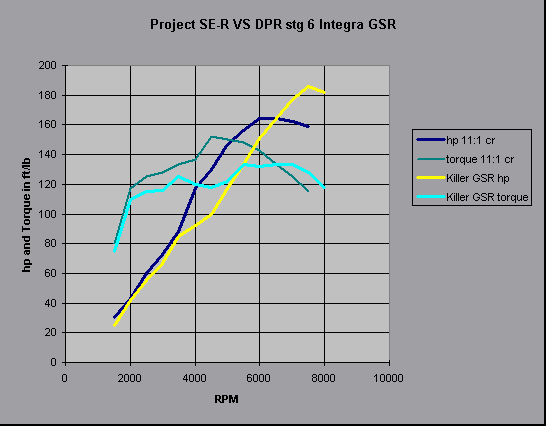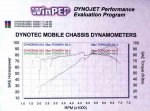I like my VTEC just fine.
I think the original statement about the flat torque curve was more to address the issue that people seem to think VTEC is like an old turbocharger, with an on-off switch. VTEC doesn't really give you a 'boost'. It just extends the ability of the engine to maintain power at higher RPMs, which results in greater horsepower. Horsepower is just torque multiplied by RPM, essentially torque applied to the real world over time.
The S2k is just a 2.0 liter (now 2.2). It only makes about 160 lbs of torque. However, it has the ability to rev to 9000 RPM. It is the ability to rev so high that allows it to make such impressive horsepower. As the RPMs increase, the HP increases (until the engine reaches its maximum power output). VTEC changes the cam profile at higher RPMs so you can run a more aggressive cam profile without compromising low-end driveability and torque.
Think of the engine as an air pump, which it basically is. If you want to move 100 pounds of air in a second, you can do it with 10 gulps in a second of 10 pounds each. You can also move 100 pounds of air with 20 gulps in a second of 5 pounds each. A larger displacement, lower RPM engine takes larger gulps at a slower pace. A smaller displacement, higher RPM engine takes smaller gulps at a faster pace.
That is why the S52(US) M3 engine and the S2K engine both make 240 hp., but the M3 has more torque. Indeed, if you know two engines make the same peak horsepower and you know their respective redlines, you know the one that makes peak horsepower at a lower RPM has more torque.
Horsepower = Torque x RPM/5252. That is why the torque curve and horsepower curve will always intersect at 5252 RPM (assuming the engine can make it to 5252) and horsepower must always exceed torque above 5252 RPM. If you see a graph that says different, it cannot be right. (Like that GSR/SE-R graph). Take a look at the M3 graph below and you will see what I mean. Torque and horsepower must intersect at 5252 if the engine makes peak horsepower above 5252.
If they are both moving 100 pounds of air in a second, they are making the same amount of power. If one car makes 240 hp. from 8400-8500 RPM and another makes 240 hp. from 6400-6500 RPM, the engines have the same performance over that 100 RPM range. The issue of low end versus high end, etc., is not really about the ultimate height of the horsepower curve or torque curve, but about the shape and the overall area under the curve. An engine that makes good power from 5-8k is no better or worse than an engine that makes good power from 4-7k. The issue is more about staying within the powerband, which is why many people like low end power, as it is much easier to stay within the powerband. I think the BMW inline six is a great balance between the two, with a lovely powerband from 4-7k. Still, I chose a car with an even greater powerband from 5-8k.
How that power translates to acceleration depends on a lot of issues, many of which are unrelated to the engine itself (gearing, traction, weight, aerodynamics, etc.)
Isn't this topic really more about 'ricers' than Honda's engineering prowess?
![Burnout [burnout] [burnout]](/images/smilies/icon_smile_burnout.gif)

![Smile [:)] [:)]](/images/smilies/smile.png)



![EEK! [eek] [eek]](/images/smilies/eek.png) . I just wanted to know some facts about the VTEC and I think I have enough already
. I just wanted to know some facts about the VTEC and I think I have enough already ![Stick Out Tongue [:p] [:p]](/images/smilies/tongue.png) . Thanks guys but if u guys got something more to add it would be quite nice
. Thanks guys but if u guys got something more to add it would be quite nice 